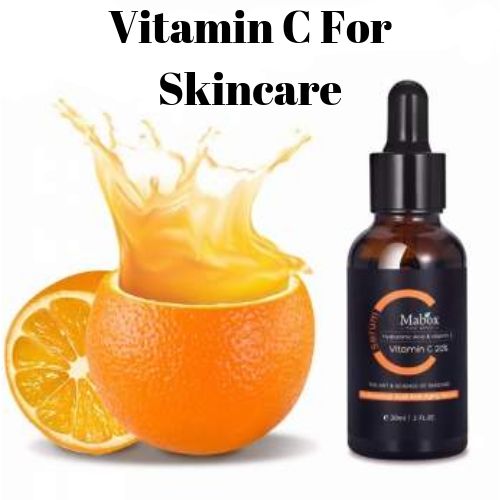Are you using your serums correctly? Serums have become a cornerstone in modern skincare routines. Unlike moisturizers, which mainly hydrate and lock in moisture, or cleansers, which wash away dirt and oil, serums deliver a concentrated dose of active ingredients directly into the skin.
Serums For Different Skin Concerns
Because of their lightweight texture and smaller molecular size, serums penetrate more deeply than most other skincare products, targeting specific issues at the root.
Not every serum is designed for every skin type. For example, a serum formulated for oily skin may not provide enough hydration for someone with dry skin, and an anti-aging serum may be too harsh for a person with sensitive skin.
That’s why choosing the right serum based on your unique concerns is essential. Below, I’ll explore the best serums for different skin concerns, breaking down the most effective ingredients, how they work, and tips to maximize their benefits.
Best Serums For Dry and Dehydrated Skin
Dry and dehydrated skin often feels tight, rough, and itchy, and may show visible flaking. Dehydration also leads to a dull, tired appearance. The goal is to replenish moisture and restore the skin barrier.
Key Ingredients to Look For:
Hyaluronic Acid: A humectant that can hold up to 1,000 times its weight in water. It pulls moisture into the skin, instantly plumping and smoothing fine dehydration lines.
Multiple molecular weights are best because small molecules penetrate deeper, while larger ones hydrate the surface.
Glycerin: A classic hydrator that not only draws in water but also improves the skin’s ability to retain it. It helps keep skin feeling soft and supple.
Squalane: A stable oil derived from olives or sugarcane. It mimics the skin’s natural sebum, making it excellent for sealing in hydration without feeling greasy.
Ceramides: These fatty acids are essential for repairing the skin barrier. They prevent transepidermal water loss, making them crucial for people with chronic dryness.
Benefits of Hydrating Serums
- Restore skin elasticity, reducing the appearance of fine lines caused by dryness.
- Alleviate feelings of tightness and irritation.
- Create a healthier skin barrier that prevents future water loss.
Apply hydrating serums immediately after cleansing, while skin is still damp. This allows humectants like hyaluronic acid to draw in more water. Always follow with a moisturizer to seal in hydration.
Best Serums for Oily and Acne-Prone Skin
Oily skin produces excess sebum, which can clog pores and trigger breakouts. The right serum should control oil, unclog pores, and calm inflammation.
Key Ingredients to Look For:
Niacinamide (Vitamin B3): Reduces sebum production, strengthens the skin barrier, and fades post-acne marks. It’s gentle enough for daily use.
Salicylic Acid (BHA): Oil-soluble, so it penetrates deep into pores to dissolve trapped sebum and dead skin cells, preventing breakouts.
Zinc: Helps regulate oil gland activity and reduces inflammation, making it a great partner to niacinamide.
Tea Tree Extract: A natural antibacterial and anti-inflammatory ingredient that helps reduce acne-causing bacteria without harshness.
Benefits:
- Controls excess shine throughout the day.
- Prevents clogged pores, blackheads, and whiteheads.
- Reduces swelling and redness from active pimples.
- Improves overall skin clarity over time.
Choose lightweight, gel-based formulas that won’t clog pores. Introduce exfoliating serums slowly (2–3 times per week at first) to avoid irritation.
Always moisturize, even if you have oily skin. Skipping moisturizer application can trigger more oil production.
Best Serums for Hyperpigmentation and Dark Spots
Hyperpigmentation, melasma, and post-inflammatory marks occur when excess melanin is produced in certain areas. Targeted serums work to brighten skin and even out tone.
Key Ingredients to Look For:
Vitamin C (L-Ascorbic Acid): A potent antioxidant that neutralizes free radicals, reduces melanin formation, and brightens skin. Works best in concentrations of 10–20%.
Alpha Arbutin: A gentle but effective brightener that reduces melanin activity without irritation, suitable for sensitive skin.
Kojic Acid: Derived from fungi, this ingredient inhibits melanin production and is often used in combination with other brighteners.
Licorice Root Extract: Contains glabridin, which helps fade dark spots and soothe redness at the same time.
Benefits:
- Fades stubborn pigmentation and acne scars.
- Creates a more even, uniform skin tone.
- Protects skin against UV and environmental triggers that worsen pigmentation.
Always pair brightening serums with SPF, since unprotected sun exposure can undo progress. Results take time. Most brightening serums need consistent use for 6–12 weeks.
Best Serums for Fine Lines and Anti-Aging
With age, skin naturally loses collagen and elasticity. Anti-aging serums stimulate renewal and help slow visible signs of aging.
Key Ingredients to Look For:
Retinol (Vitamin A): A gold-standard anti-aging ingredient that increases collagen production, smooths fine lines, and reduces hyperpigmentation. Beginners should start with lower concentrations.
Peptides: Chains of amino acids that act as messengers, telling skin cells to produce more collagen and elastin. They are gentler than retinol but still effective.
Bakuchiol: A plant-derived retinol alternative with similar benefits but less irritation, making it ideal for sensitive skin.
Growth Factors: Proteins that promote repair and regeneration at the cellular level, accelerating skin healing.
Benefits:
- Reduces the appearance of wrinkles and fine lines.
- Improves firmness and elasticity.
- Refines skin texture and tone.
Retinol should be introduced gradually (once or twice a week, then increase frequency). Always use retinol only at night and apply sunscreen in the morning. Pair with hydrating and soothing serums to reduce irritation.
Best Serums for Sensitive and Redness-Prone Skin
Sensitive skin reacts quickly to strong actives and harsh environments. Calming serums are essential to reduce irritation and strengthen the skin barrier.
Key Ingredients to Look For:
Centella Asiatica (Cica): Rich in asiaticoside and madecassoside, which calm inflammation and promote healing.
Aloe Vera: Naturally hydrating and soothing, reduces burning sensations.
Chamomile Extract: Contains bisabolol, a compound with strong anti-inflammatory properties.
Panthenol (Vitamin B5): Boosts hydration, accelerates healing, and strengthens the skin’s protective barrier.
Benefits:
- Reduces visible redness and blotchiness.
- Prevents irritation from external triggers like pollution or harsh weather.
- Improves long-term tolerance to other skincare products.
Stick to fragrance-free, alcohol-free formulas. Avoid layering too many actives at once. Build tolerance slowly before introducing stronger serums.
Best Serums for Dull and Tired Skin
When skin lacks radiance, it often looks flat, gray, or lifeless. Brightening serums energize the skin and restore vibrancy.
Key Ingredients to Look For:
Vitamin C: Neutralizes oxidative stress and brightens skin tone. Best combined with ferulic acid for stability and enhanced effectiveness.
Niacinamide: Strengthens skin and boosts overall glow while reducing redness and dullness.
Lactic Acid (AHA): Gently exfoliates, improving light reflection on the skin’s surface.
Ginseng Extract: Improves circulation, revives tired-looking skin, and enhances radiance.
Benefits:
- Boosts glow and liveliness.
- Promotes smoother skin texture.
- Protects skin against environmental stressors.
Exfoliating serums should be used a few times per week, not daily. Layer with hydrating serums to avoid dryness.
Best Serums for Large Pores and Uneven Texture
Large pores and rough skin texture often result from excess oil, buildup, and loss of elasticity. Texture-refining serums can help smooth skin over time.
Key Ingredients to Look For:
Niacinamide: Tightens pores by reducing oil production.
Retinol: Improves skin turnover, helping pores appear smaller.
AHAs (Glycolic/Lactic Acid): Exfoliate surface dead cells, leaving skin smoother.
BHAs (Salicylic Acid): Penetrates and clears out clogged pores.
Benefits:
- Makes pores look less visible.
- Improves rough, uneven texture.
- Reduces blackheads and congestion.
Consistency is key. Pore-minimizing results take several weeks. Always moisturize after exfoliating serums to prevent irritation.
Best Serums for Combination Skin
Combination skin has both oily and dry areas, making it tricky to balance. Multi-tasking serums are the best solution.
Key Ingredients to Look For:
Niacinamide: Balances sebum production while also hydrating.
Hyaluronic Acid: Lightweight hydration for dry patches without heaviness.
Green Tea Extract: Provides antioxidants and regulates oil.
Panthenol: Strengthens skin barrier and prevents dryness.
Benefits:
- Keeps skin balanced without over-drying or over-hydrating.
- Reduces redness while maintaining oil control.
- Suitable for seasonal changes where skin behavior shifts.
Use a hydrating serum in drier areas and an oil-control serum in oilier zones. Adjust serum choices depending on the weather. Use more hydrating products in winter, more balancing in summer.
Best Serums for Skin Brightening and Glow
Glow serums are specifically designed to give the skin a healthy, luminous look.
Key Ingredients to Look For:
Vitamin C + Ferulic Acid: A combination that boosts antioxidant protection and brightening.
Niacinamide: Improves overall brightness by reducing redness and blotchiness.
Mulberry Extract: A natural botanical that inhibits melanin production.
AHAs: Encourage faster skin turnover, helping fresh, glowing skin emerge.
Benefits:
- Promotes luminous, even skin tone.
- Protects from oxidative damage that causes dullness.
- Works well alongside hydrating serums for a long-lasting glow.
Use in the morning for all-day brightness and antioxidant protection. Always follow with SPF, as glow serums often make skin more sun-sensitive.
My Tips for Choosing the Right Serum
- Patch Test First: Apply a new serum on a small area (like your jawline) to check for reactions.
- Introduce Gradually: Only add one new serum at a time. This way, you’ll know what works and what causes irritation.
- Check Ingredient Concentrations: High percentages aren’t always better. Start with lower strengths and increase as skin adjusts.
- Layer in the Right Order: Apply serums after cleansing but before moisturizing. Thin, watery serums go first, followed by thicker ones.
- Always Wear Sunscreen: Many active serums (like retinol, vitamin C, and acids) make skin more sensitive to sunlight. SPF is non-negotiable.
My Final Thoughts
Serums are some of my most powerful tools in my skincare because of their ability to deliver targeted treatments. Trust me, there’s a serum designed to meet your needs.
The secret to success lies in understanding your skin, choosing the right ingredients, and being consistent. With the right serum, you can transform your routine and achieve healthier, glowing skin over time.
If you are interested in hair care and skin care, consider subscribing to my newsletter. Additionally, follow me on Pinterest to discover more amazing pins.








